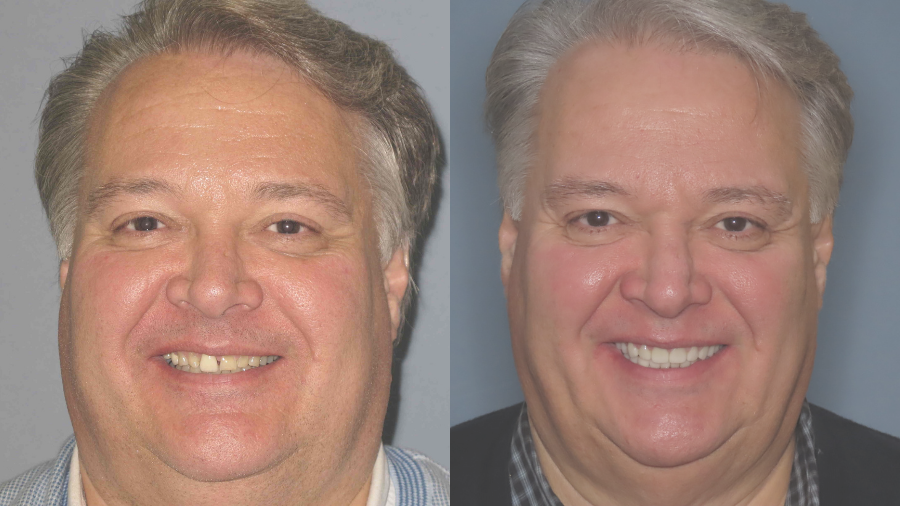By: Dr. Elizabeth Eggert
Some patients who come to us with chronic dental problems also present airway patency issues. Simply put, airway patency is the ability of a person to breathe, with airflow passing to and from the respiratory system through the oral and nasal passages.
When a person experiences difficulty breathing, especially at night, this can 1) negatively affect one’s oral health, and 2) continue to damage the teeth even after restorative dental procedures have been completed.
So, what does that mean for patients of Eggert Family Dentistry? It means that before beginning any restorative dental treatment, we need to identify and address these airway patency issues using a process called the Seattle Protocol.
The Seattle Protocol
The Seattle Protocol is a six-step process that helps patients with symptoms of sleep-disordered breathing and other conditions determine whether a compromised airway is contributing to their ailments.
Each of the six steps builds upon the last to open the airway as much as possible, but patients don’t necessarily need to complete the entire process to identify the solution. The purpose of the protocol is to determine which step provides the patient the most relief of symptoms.
Here is a brief description of the six steps of the Seattle Protocol:
- Nose Breathing and Mouth Taping: During this stage, you will gently train your body to breathe through your nose, not your mouth.
- Temporary Splint for Lower Jaw and Mouth Taping: Once you’ve adjusted to the mouth taping, the second step of the protocol adds a temporary splint for your lower jaw while you sleep.
- Temporary Splint for Lower Jaw with Lower Jaw Pulled Forward and Mouth Taping: If adding the lower splint only isn’t giving you the restful sleep you deserve, we add an element that pulls your lower jaw forward.
- Temporary Splint for Lower and Upper Jaw with Mouth Taping: If you aren’t getting relief from the previous step, we remove the forward jaw posturing component and add a splint for your upper jaw.
- Temporary Splint for Lower and Upper Jaw with Lower Jaw Pulled Forward and Mouth Taping: If you need to continue in the protocol, step five again adds a horizontal component by linking the upper and lower splints together and moving the lower jaw forward.
- Temporary Splint for Lower and Upper Jaw with Lower Jaw Progressively Pulled Forward and Mouth Taping: If you still aren’t getting that good night’s sleep, we move to the final stage of the Seattle Protocol. In this stage, we keep moving your lower jaw forward, incrementally, until you feel well-rested.
As we said before, the goal of the Seattle Protocol is to open the airways as much as possible so that your breathing is no longer restricted. You can find a full description of each of the six steps here.
The Benefits of the Seattle Protocol
The main benefit of the Seattle Protocol is to determine a good position to help control your sleep-disordered breathing. However, the Seattle Protocol also comes with a host of other positive benefits for our patients.
Improved safety: The Seattle Protocol prioritizes patient safety by allowing us to take a systematic and collaborative approach to airway management. By following a standardized protocol, Dr. Jeff Eggert or Dr. Elizabeth Eggert can identify and address airway issues quickly and effectively, minimizing the risk of complications during dental procedures. It is also completely reversible so there are no long-term ill-effects.
Increased comfort: The Seattle Protocol takes a gradual and gentle approach to airway management to maximize patient comfort by introducing interventions slowly and adjusting them as needed. More importantly, when the Seattle Protocol is successful, our patients can finally enjoy a comfortable night’s sleep!
Better outcomes: By identifying and addressing airway issues before beginning any dental restorations, the Seattle Protocol ensures that our patients can maintain their new smiles for as long as possible, without any complications. This will not only help our patients recover more quickly but also ensure that they get the most out of their financial investment.
Personalized care: The Seattle Protocol is designed to be flexible and adaptable to the individual needs of each patient. By tailoring interventions to each patient’s unique situation, we can provide the solution that’s right for you.
At Eggert Family Dentistry, the Seattle Protocol assists us in treating our patients with airway patency issues or sleep-disordered breathing. The systematic steps allow us to both address the problem and identify the solution so our patients can receive the best possible care during dental procedures, and achieve the best possible outcomes afterward!
Real Results: Tom’s Story

One of our patients, Tom, came to us with excessive wear, erosion, and many fractured teeth. Tom needed to reconstruct his mouth and we did that in phases, however, during the process we ran into a few complications:
The force of Tom’s bite was so strong that he broke many temporary crowns. Dr. Elizabeth Eggert wanted to get down to the bottom of why Tom’s body would do this because even new crowns wouldn’t survive in such a harsh environment.
Given Tom’s other symptoms, including difficulty breathing through his nose, dry mouth, and the use of a CPAP machine, Dr. Elizabeth Eggert recommended Tom complete the Seattle Protocol to help address his airway patency.
After completing five of the six steps of the Seattle Protocol, Dr. Elizabeth Eggert fabricated a sleep appliance for Tom to continue to improve his airway patency, reduce his bruxism and help him sleep better. After just a month of using his sleep appliance, Tom experienced less clenching, jaw pain, and an overall improvement in his sleep!
Think You Could Benefit from the Seattle Protocol?
If you, too, are experiencing airway patency issues or sleep-disordered breathing, call our office today to schedule a consultation. At Eggert Family Dentistry, Dr. Jeff Eggert or Dr. Elizabeth Eggert will be able to collaborate with you on finding a solution to your unique situation. If you think you could benefit from the Seattle Protocol, contact us or call us at 651-482-8412 for a consultation today!
